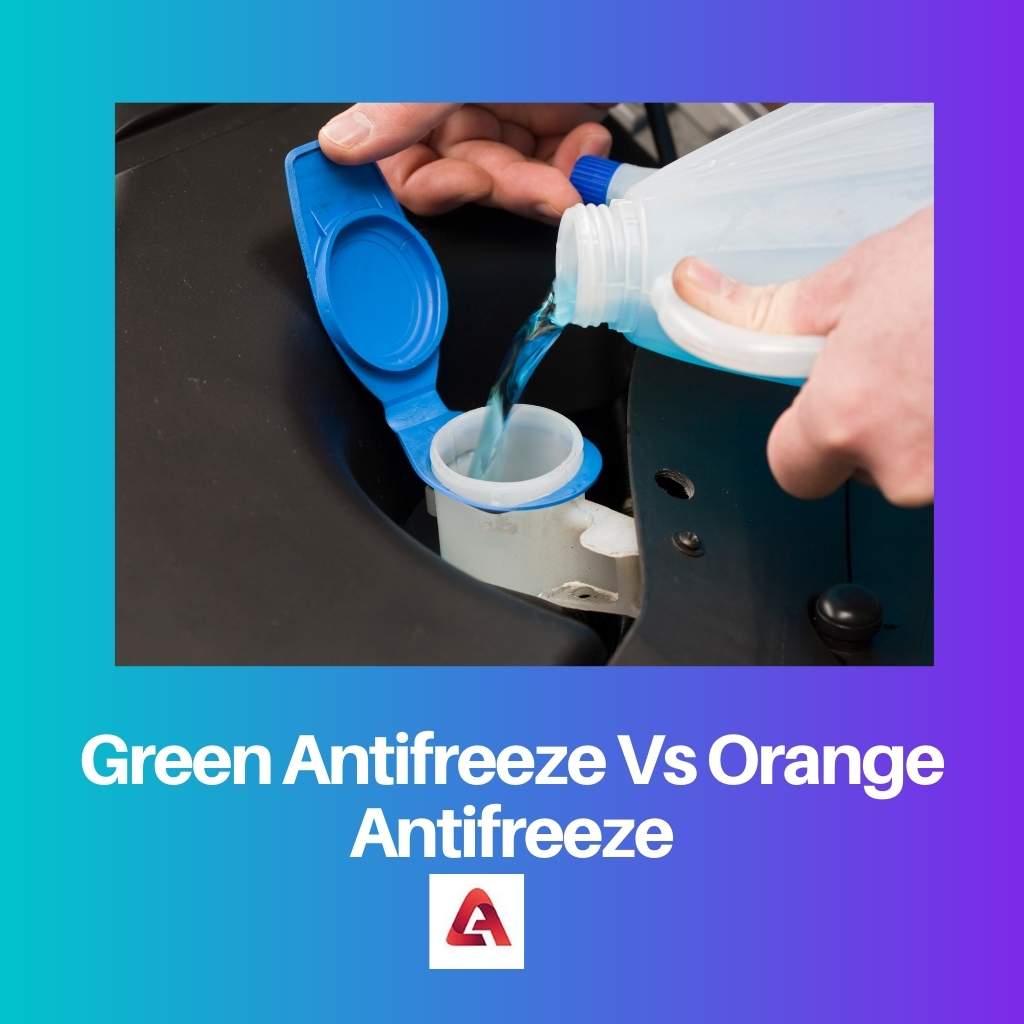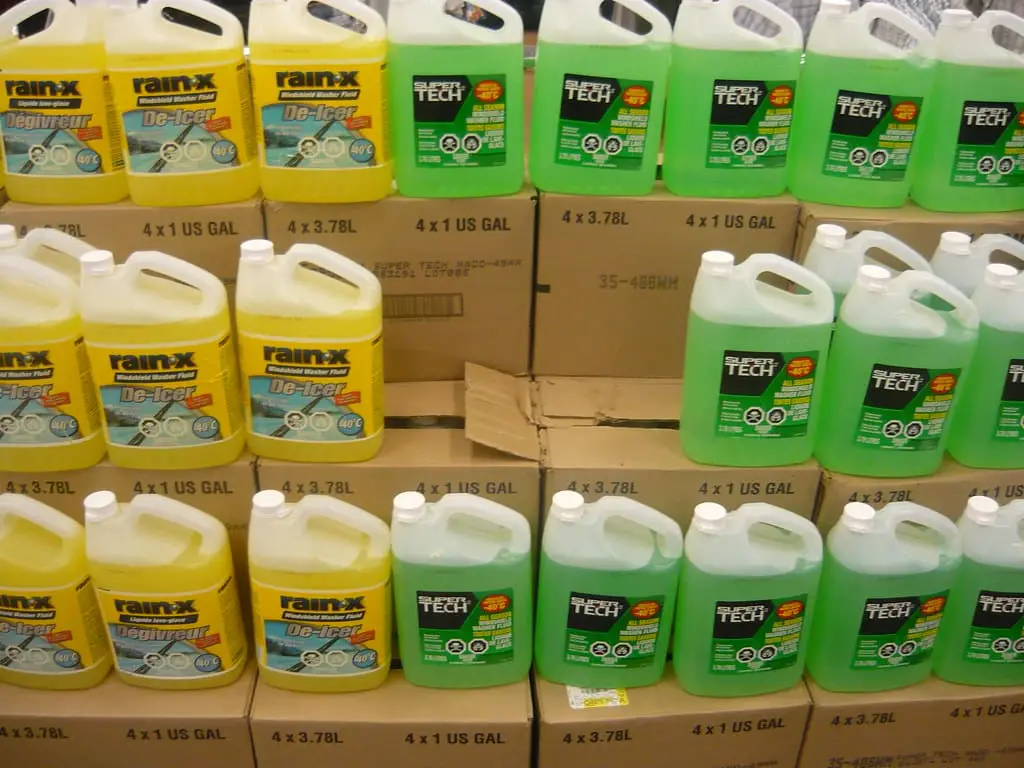The news of the fire in the engine makes us fear in the heart. The vehicles must maintain the correct temperature for an effective process. The coolants are the solution for radiating the temperature.
The coolants help to maintain a better temperature of the engine. It prevents overheating in summer and freezing in the winter seasons. The Green and Orange coolants are famous for the colors and flavours which effectively work on engines. They are available in online stores.
Key Takeaways
- Green antifreeze is made of inorganic acid technology, while orange antifreeze is made of organic acid technology.
- Green antifreeze is cheaper than orange antifreeze.
- Orange antifreeze has a longer life and better protection against corrosion than green antifreeze.
Green Antifreeze vs Orange Antifreeze
Green antifreeze, also known as traditional or conventional antifreeze, is made with ethylene glycol as the primary ingredient, along with various additives and corrosion inhibitors. Orange antifreeze, also known as extended life, is made with a different type of primary ingredient, propylene glycol, along with different additives and corrosion inhibitors.

The green antifreeze is working on the concept of IAT( Inorganic Additive Technology). Phosphate or silicones with propylene glycol or ethylene glycol, the green antifreeze, is composed.
This composition helps the metals inside to prevent rust and corrosion. The old aged cars, like the cars in the 80s made with heavy metals and steel. The engine in old cars is needed pursy work, which leads to overheating. For that, green antifreeze is composed.
The orange antifreeze is for new cars. It works on the concept of OAT(Organic Additive Technology). The carboxylates are the vital component that prevents rust and corrosion.
The carboxylates do not affect non-metallic surfaces. The only aim of orange antifreeze is to protect the metallic plane from attrition. The coolant, called Dex coolant, is mixed with OAT to work more effectively.
Comparison Table
| Parameters of comparison | Green antifreeze | Orange antifreeze |
|---|---|---|
| Definition | The green antifreeze used in old-aged cars contains heavy metals. | The orange antifreeze used in newly modeled cars prevents freezing. |
| Raw materials | Phospate or Silicon | Carboxylates |
| Type | IAT(Inorganic Additive Technology) | OAT( Organic Additive Technology) |
| Inhibitor | Made of Silicates | Made of Organic acids |
| Color | Green in color | Orange in color |
| Used car models | In the ’80s, modeled cars | In the ’90s, modeled cars |
What is Green Antifreeze?
Green antifreeze is a type of Inorganic Additive Technology (IAT). The silicates inside work on the metals to prevent corrosion and rust. The cars with heavy metals fitts with green antifreeze to erect cooling.
People misconnect the coolant with water. But coolants are different from water. They have separate Chemical properties that help to cool the engine. The cooling efficiency of cars is stable until the metals inside are pure.
The labour capability of the motor will increase with a decrease in cooling efficiency. It is created less toxic to humans. The green antifreeze is replaced with more chemicals to work more effectively every three years. The cars produced before 2000 use green antifreeze.
The four-wheelers with heavy metals used green antifreeze for cooling. It not only protects the engine but also provides cooling and prevents overheating. Anti-foam additives are present in modern engines. This Antifoam will prevent foam formation and gives better performance to the engine.
The car cooling system consists of metals in all parts. The metals might rub together and result in overheating. The green antifreeze contains propylene glycol and ethylene glycol that prevent the engine from overheating.
People living in colder climates may face freezing problems. The green antifreeze has silicates that prevent the engine from freezing in colder temperatures.

What is Orange Antifreeze?
Orange antifreeze is a type of Organic Additive Technology (OAT). Carboxylates are a vital component in organic antifreeze. The newly modelled cars have aluminium and nylon.
The orange antifreeze formulates to work on vehicles made up of aluminium and nylon. The additives used in orange antifreeze help to prevent overheating and cooling. Carboxylates are inhibitors in nature. They can protect metals from rust and corrosion.
The carboxylates don’t coat the whole cooling system of the vehicle, unlike the silicates that glaze the entire system of cooling parts in an automobile. It gives more life to the engines.
Global warming results in extreme temperature that makes the vehicles overheat. Modern technology has aluminium which can be prevented by carboxylates. The orange antifreeze gives a better experience to the engines with fewer metals.
The carboxylates are unique because of their performance. It only reacts with metals and protects the metals from rust and corrosion. It doesn’t act with non-metal surfaces. Even at high temperatures, the carboxylates protect the metals in the engine.
The carboxylates protect metals by transferring the heat outside and extending the lifecycle. But it is not a good idea to mix the orange and green antifreeze. That leads to the thickening of the consistency of the liquid and makes the closure of the water pump.
Main Differences Between Green Antifreeze and Orange Antifreeze
- Green antifreeze uses in old-aged cars, and orange antifreeze uses in newly modelled automobiles.
- Green antifreeze contains silicates, and orange antifreeze contains carboxylates.
- Green antifreeze is green in color, and orange antifreeze is orange in color.
- Inorganic Additive Technology is green antifreeze, and Organic Additive Technology is orange antifreeze.
- Propylene glycol in green antifreeze prevents overheating, and carboxylates in orange antifreeze avert overheating.

- https://royalsocietypublishing.org/doi/abs/10.1098/rstb.2002.1081
- https://portlandpress.com/biochemj/article-abstract/477/17/3271/226081

The article’s key takeaways are beneficial for understanding the main differences between green and orange antifreeze.
Agreed. I particularly found the information about the raw materials of the antifreeze and their impact on different car models very interesting.
The comparison table is very helpful for quickly understanding the distinctions between green and orange antifreeze. This article is well-researched and well-presented.
The article’s explanation of orange antifreeze and its role in protecting modern car engines is detailed and well-researched. It’s a valuable guide for those seeking to understand the benefits of orange antifreeze.
Absolutely. Learning about carboxylates and their significance in preventing corrosion in modern vehicles is highly informative. This article provides an excellent overview.
This article elucidates the significance of green and orange antifreeze, making it easier for readers to comprehend their roles in protecting car engines and enhancing cooling efficiency.
I found the comparison table and the comprehensive overview of green and orange antifreeze very helpful. It’s a reliable source of information for car owners.
Indeed. The article effectively highlights how green and orange antifreeze contribute to preventing engine damage and ensuring optimal vehicle performance.
This article clearly explains the working principles of green and orange antifreeze, making it easy for car owners to make informed decisions about the type of antifreeze suitable for their vehicles.
I agree. The detailed information about how each type of antifreeze protects the engine against rust and corrosion is very enlightening.
The distinction between IAT and OAT and their specific applications in old and new car models is well-explained in this article. It’s a great resource for car enthusiasts.
The article’s in-depth exploration of green and orange antifreeze, including their specific compositions and applications, makes it a valuable resource for anyone looking to understand the role of antifreeze in vehicle maintenance.
I couldn’t agree more. The article elegantly captures the essence of green and orange antifreeze, making it an essential read for car enthusiasts and owners alike.
This article offers a comprehensive comparison of green and orange antifreeze, providing valuable insights into their distinct compositions, functionalities, and applications in different car models.
I appreciate the detailed explanation of how green antifreeze protects metals in old car models and how orange antifreeze safeguards modern car engines. It’s an educational read.
The article’s comparison table effectively summarizes the key differences between green and orange antifreeze, making it easier for readers to grasp their unique features.
The article’s comparison of green and orange antifreeze along with their unique functionalities is enlightening. It’s beneficial for those seeking to comprehend the differences between the two types of antifreeze.
The detailed information about green and orange antifreeze, including their working principles and intended car models, provides a comprehensive understanding of these essential vehicle components.
I agree. The distinct features of IAT and OAT and their respective applications in different car models are well-delineated in this article.
The article provides a detailed understanding of the chemistry and technology behind green and orange antifreeze, enabling car owners to make informed decisions about the type of antifreeze suitable for their vehicles.
Exactly. The scientific explanations of silicates and carboxylates in green and orange antifreeze are highly informative and help in understanding their unique properties.
The article’s explanation of green antifreeze and its application in old-aged cars is insightful and provides a compelling reason for using it in such vehicles.
Exactly. I found the information about the composition of green antifreeze and how it prevents rust and corrosion in old cars very educational.
The article provides a thorough comparison of green and orange antifreeze, explaining their composition, uses, and benefits in detail.
I agree, it’s very informative and helpful for car owners to understand the differences between the two types of antifreeze.
I appreciate the scientific details provided about IAT and OAT. It’s essential for car owners to know how these different technologies function.